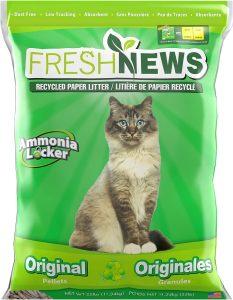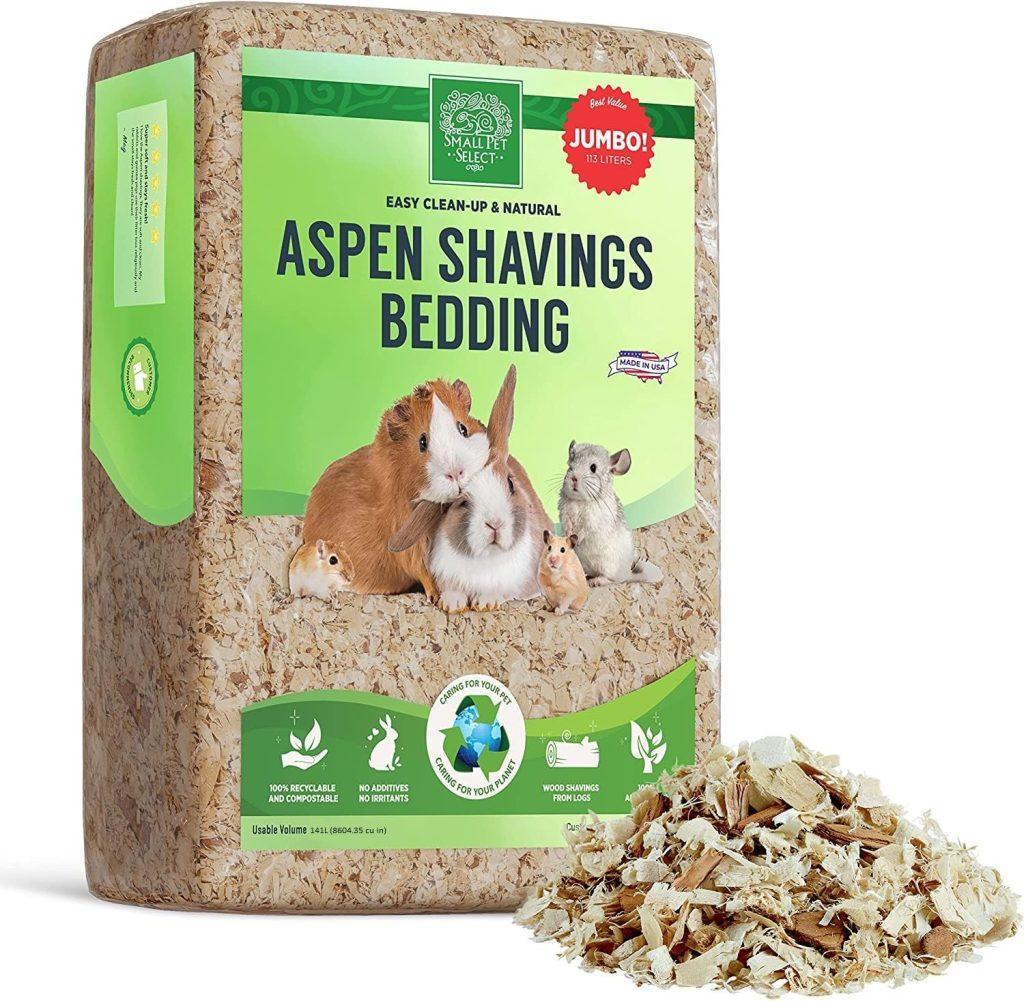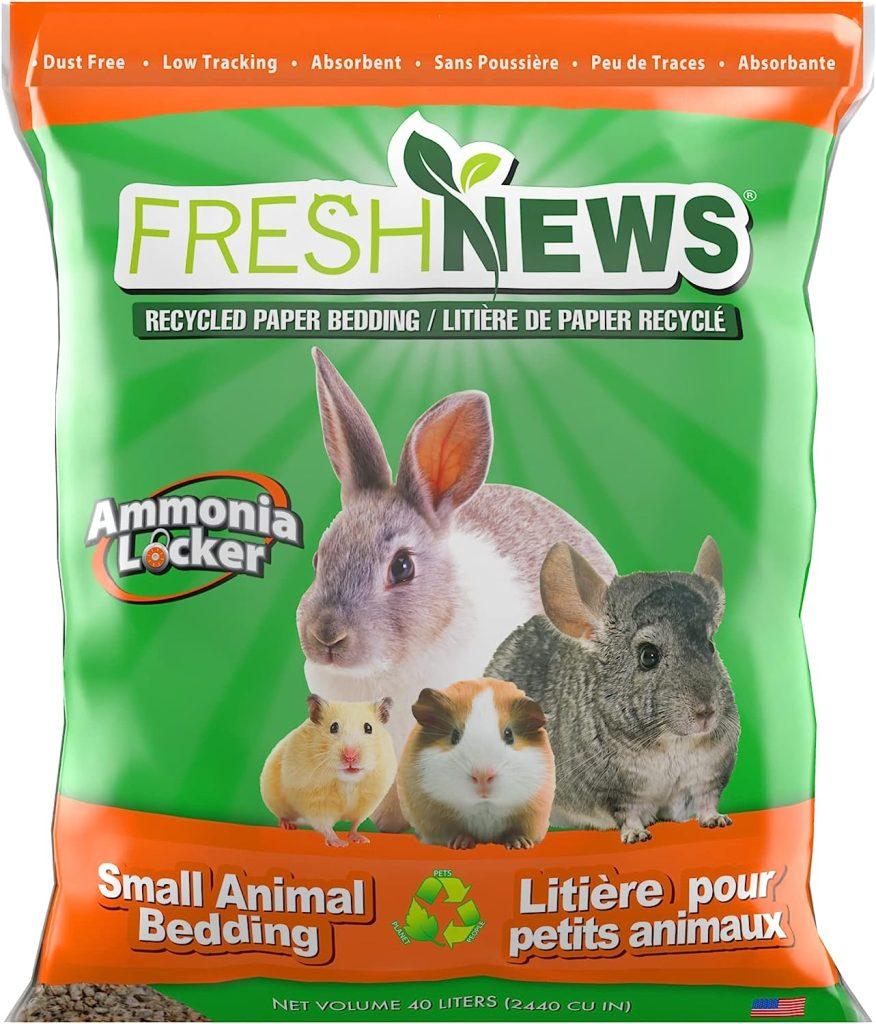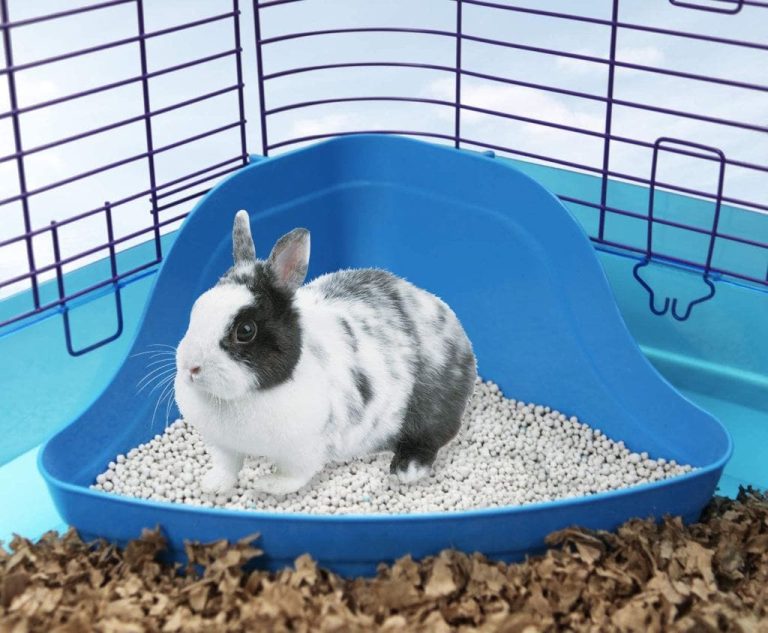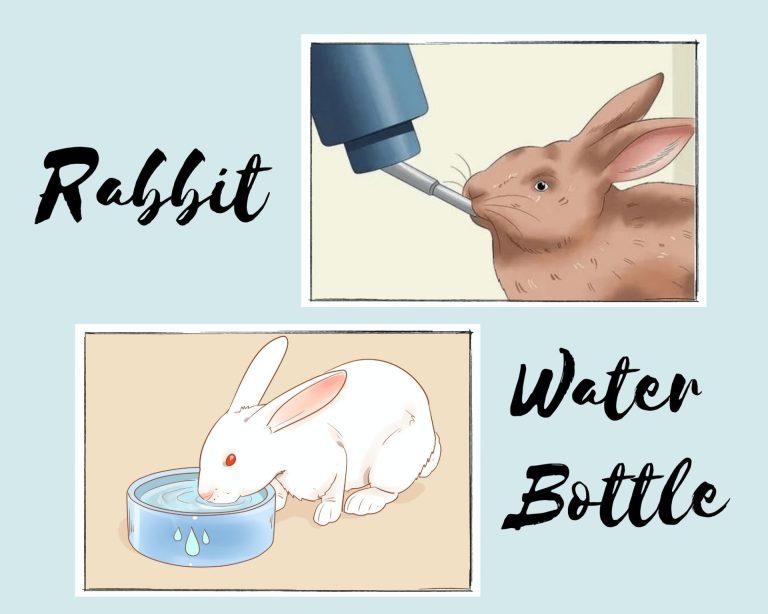Rabbits make wonderful companions, but caring for them requires attention to detail. Litter box training and bedding selection are crucial aspects of their care. To successfully train your rabbit, choose a spacious box, observe their habits for the right location, opt for rabbit-safe litter, and use positive reinforcement. Maintaining a clean litter box involves daily removal of waste, weekly full cleaning with mild cleaners, and monitoring your rabbit’s health. For bedding, consider paper-based options, hay for comfort, straw for odor control, or soft fleece blankets. Proper training and bedding ensure a clean, cozy, and healthy environment for your furry friend’s well-being.

Why Your Rabbit Rejects the Litter box?
When your rabbit refuses to use the litter box, consider these troubleshooting strategies:
- Check Location: Ensure the litter box is in a quiet, accessible, and safe spot.
- Litter Type: Experiment with different litter options to find your rabbit’s preference.
- Box Size: Choose a spacious litter box that allows your rabbit to comfortably move.
- Litter Depth: Adjust the litter depth to about an inch for easier access.
- Cleanliness: Keep the litter box clean to encourage regular use.
- Hay Placement: Position hay near the litter box; rabbits often eat and go simultaneously.
- Consistency: Establish a routine for your rabbit’s bathroom breaks.
- Positive Reinforcement: Praise and reward your rabbit when they use the litter box.
- Observe Behavior: Watch for signs of discomfort or illness that may affect litter box use.
- Consult a Vet: If issues persist, consult a rabbit-savvy veterinarian for advice.
Let’s Craft a Comfortable and Stimulating Home for Your Bunny”
Designing the ideal enclosure for your rabbit requires careful consideration and planning. Follow these steps to provide your furry friend with a spacious, secure, and enjoyable living space:
Step 1: Assess Space Requirements
- Rabbit Space should be 3 times the length and 2 times the width of the rabbit.
- Height should allow the rabbit to stand upright without hitting their head.
- Ideal dimensions: at least 4 feet by 2 feet (8 square feet) for an average-sized rabbit.
- Check on Amazon Click here
Step 2: Choose the Right Enclosure
- Rabbit cages often fall short; opt for a pet exercise pen for ample space.
- Exercise pens are cost-effective, easy to clean, and offer 16 square feet of room.
- Find these pens in pet stores or online (e.g., Amazon) in the dog section.
- Check on Amazon Click here
Step 3: Cover the Flooring
- Lay down towels, mats, or puppy pee pads for traction and protection.
- If using hardwood or slick flooring, prevent injuries with a soft surface.
- Check mats on Amazon Click here
Step 4: Set Up the Litter Box
- Choose a large cat litter box for rabbits; avoid small corner boxes.
- Use paper-based litter to prevent digestive issues caused by clay litter.
- Consider Small Pet Select for safe and effective litter options.
- Litter Box Check on Amazon Click here
Step 5: Provide Timothy Hay
- Essential for digestion; place hay directly in the litter box or a hay trough.
- Ensure unlimited access to hay throughout the day.
- Check Hay Box on Amazon Click here
Step 6: Place Food and Water Bottle/Bowls
- Position them away from the litter box to keep them clean.
- Use heavy ceramic bowls for stability and natural drinking behavior.
- Check on Amazon water bottle and bowl
Step 7: Introduce a Hiding House
- Offer privacy and security with a hiding house or cardboard box.
- Position in a corner for added comfort and safety.
- Check on Amazon Click here
Step 8: Offer Stimulating Toys
- Prevent boredom with a variety of toys.
- Choose from different options, including toys from Small Pet Select.
- Some Toys on Amazon Click here
Step 9: Customize and Observe
- Let your rabbit explore and rearrange items to their liking.
- Pay attention to their preferences and adjust accordingly.

Creating a rabbit enclosure tailored to your furry companion’s needs enhances their well-being and happiness. Your rabbit’s new home awaits, providing comfort, stimulation, and space to hop around freely.
Recommended Bedding Types For Litter:
| Recycled Paper Pellets: | Comfort and absorbency. Effective odor control and safe consumption. Example: Brands like Carefresh, Oxbow Pure Comfort, and Yesterday’s News |
| Recycled Paper Fluff and Bedding: | Budget-friendly with odor control. Cushioning properties for added comfort. Examples of practical brands |
| Kiln-Dried Pine Shavings: | Safety and natural odor control Bacterial growth regulation Example: Brands offering treated pine shavings |
| Aspen Shavings: | Comfort and odor control balance Pros and cons of scented bedding Example: Various aspen shaving products |
| Newspaper Shreds: | Cost-effective absorbency. Limitations in odor control. Example: Practicality for a tidy habitat |
| Wood Pellets: | Absorbency and moisture management Roles in odor control. Example: Brands like wood stove fuel pellets and Feline Pine |
| Safe, Compostable Litter: | Eco-friendly choices for conscientious owners Options like paper litter and their benefits Example: Brands like Carefresh, Oxbow Pure Comfort, and Okocat paper litter. |
Litter Types to Avoid: Ensuring Your Rabbit’s Safety
Understand which litter types to avoid due to potential health risks, including:
Pine or Cedar Shavings: Toxic Emissions, Liver Damage
Swheat Scoop Litter: Nutritional Risks, Health Complications
Clay Litter: Dust Hazards, Respiratory Perils
Clumping Litters: Digestive and Respiratory Threats
Corn Cob Litter: Ineffectiveness, Lethal Risks
Clay-Based Cat Litter: Ingestion Dangers
Straw: Limitations, Risks as Bedding
Sawdust: Respiratory Threats, Safety Concerns
Cedar and Non-kiln-dried Pine Shavings: Negative Impacts
Addressing Challenges: When a Litter-Trained Rabbit Struggles
Explore potential reasons for litter box regression in both new and trained rabbits. Understand the impact of illness, sudden changes, and age on litter box habits.


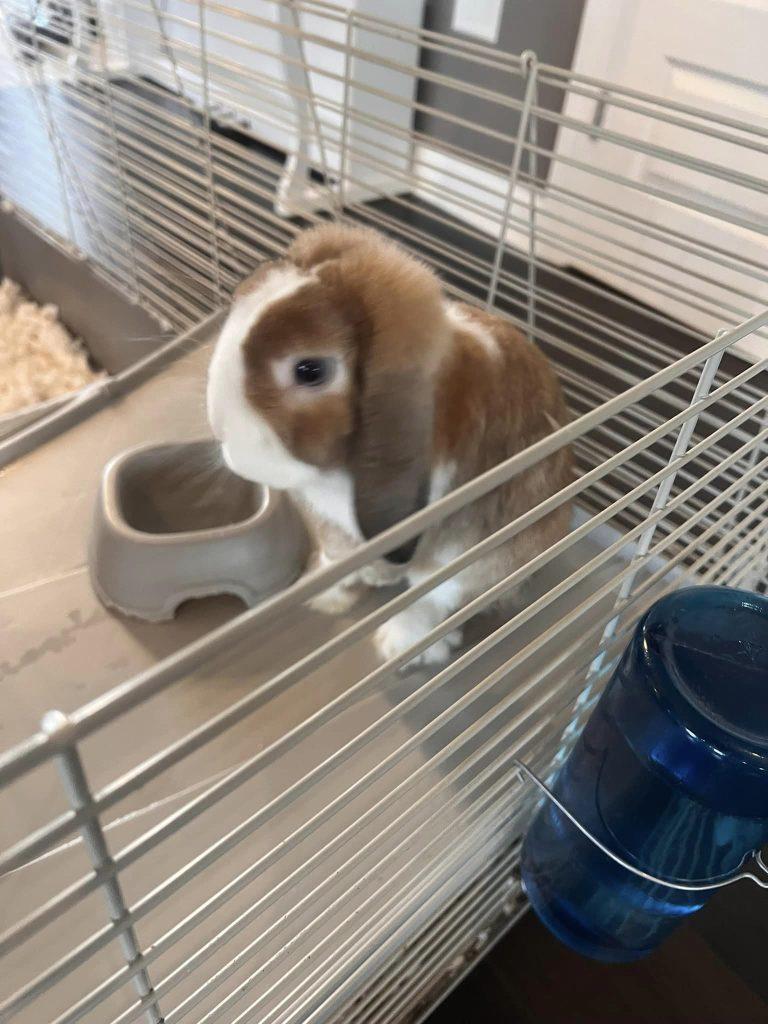
Embark on a successful journey of litter training your rabbit with this comprehensive guide. By combining understanding with patience and practical techniques, you can create a clean, comfortable, and thriving environment for your beloved bunny.
Step-by-Step Litter Training Process
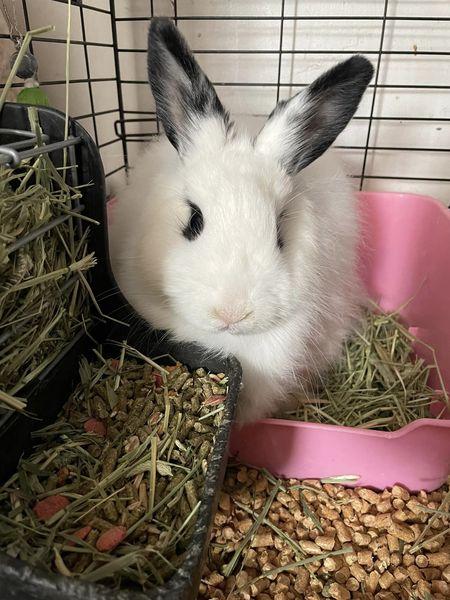
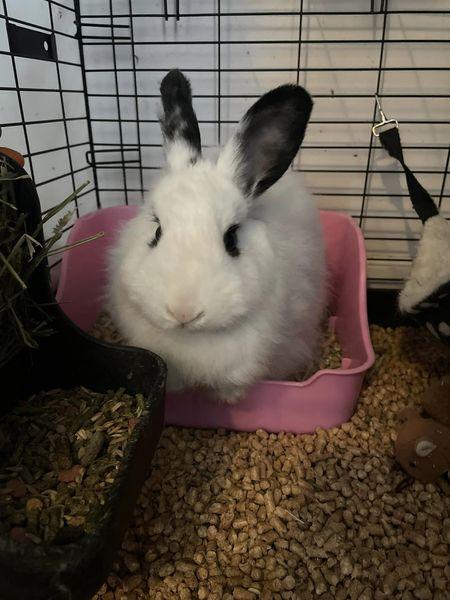
Step 1: Prepare the Litter Box
Begin by placing a layer of rabbit-safe bedding, such as recycled paper pellets, at the bottom of the litter box. Create a layer that’s approximately 2–3 inches deep. This provides comfort and absorbs moisture effectively. Select a shallow storage container or a medium-sized cat litter box as the designated litter box for your rabbit. The size and design of the litter box play a role in your rabbit’s comfort and ease of use.
Step 2: Introduce Hay
Add a generous layer of hay to one end of the litter box or place a hay feeder close to the litter box. Rabbits have a natural inclination to munch on hay while going to the bathroom, making this step an essential part of the housetraining process.
Step 3: Hay Feeder
Place a hay feeder next to the litter box to encourage positive litter box habits. This setup encourages your rabbit to enter the litter box while enjoying their favorite snack.
Step 4: Choose the Right Location
Position the litter box in a corner of your rabbit’s housing area. If you have a larger cage with multiple levels, consider placing multiple litter boxes to accommodate your rabbit’s needs. If your rabbit has already chosen a corner for urination, place the litter box there to align with their preferences.
Step 5: Gradually Expand Their Space
Initially, confine your rabbit to their caged area until they consistently use the litter box. Once you’re confident in their litter box habits, gradually allow them more freedom to roam. Extend their space while ensuring you provide additional litter boxes in their free-run area.
Step 6: Managing Poop Behavior
Understand that some rabbits may continue to leave droppings outside the litter box as a territorial behavior. While you can pick up these droppings and place them in the litter box, the behavior might persist to some extent. Focus on the urination aspect of housetraining, as rabbits are more controllable in this regard.
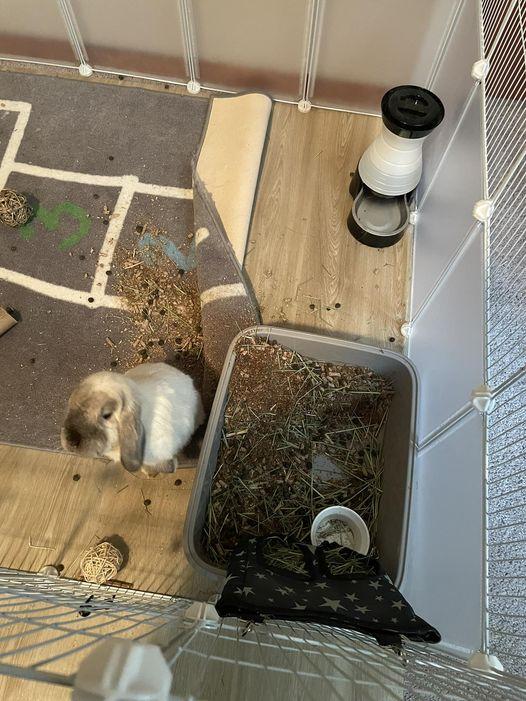
Step 7: Daily Maintenance
Keep your rabbit’s litter box fresh by providing fresh hay 2-3 times a day. Replace soiled bedding and clean the litter boxes at least every other day using a bunny-safe cleaner, such as a mixture of white vinegar and water. This regular maintenance helps ensure a hygienic environment for your rabbit.

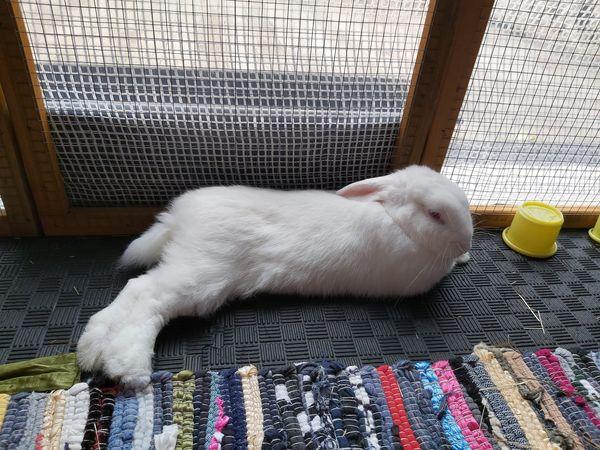
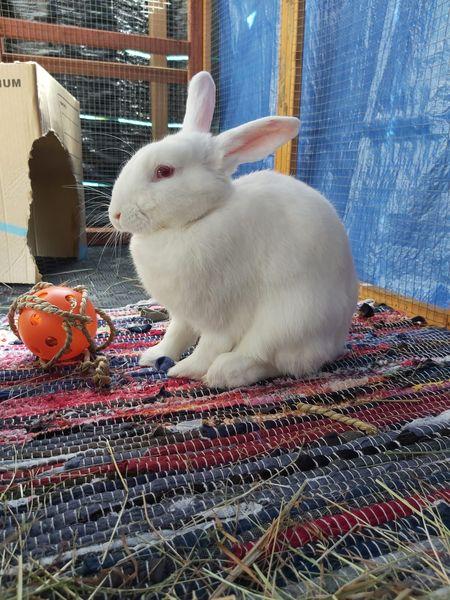
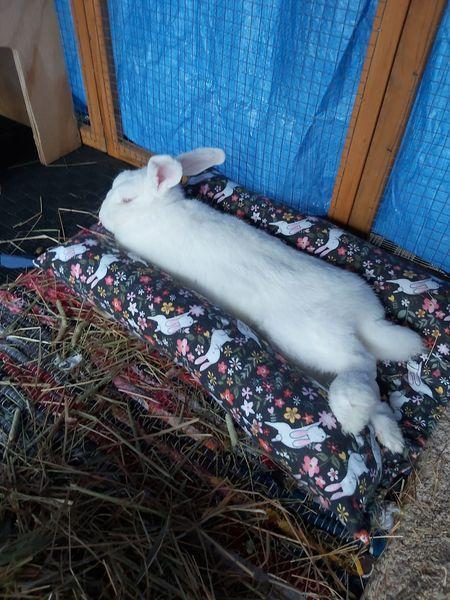
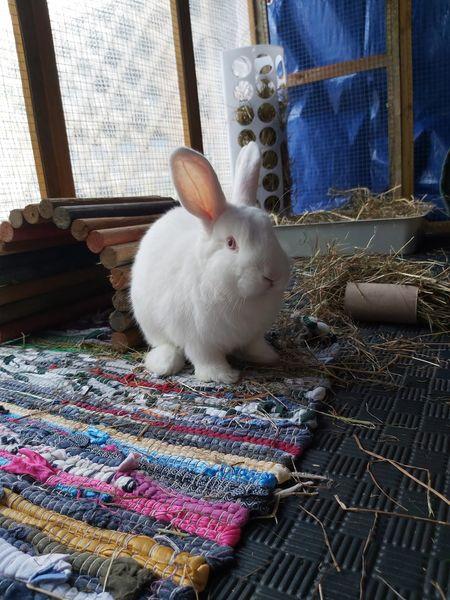
Alternatives to Pee Pads
If you prefer alternatives to pee pads, consider using bedding materials that offer better absorption rates and economy in the long run. However, be cautious with beddings, as they can pose challenges and lead to wastage.
FAQ’s
Learn how the gender of your rabbit can impact litter training. Discover how spaying and neutering play a role in making the training process smoother and why unaltered males may present unique challenges.
Age and Litter Training: It’s Never Too Late
Explore the influence of a rabbit’s age on litter training success. Whether you’re training a Child, young bunny, or an older rabbit, find out how to adjust your approach and expectations accordingly.

Conclusion:
Creating a comfortable and hygienic environment for your rabbit involves careful attention to litter box training and bedding selection. Litter box training can be achieved through strategic placement, positive reinforcement, and maintaining a consistent routine. Selecting the right bedding ensures your rabbit’s comfort and safety. Recycled paper pellets, safe hay placement, and daily maintenance contribute to a clean and cozy living space. Addressing challenges, such as litter box regression or dribbling, requires patience, observation, and potential veterinary consultation. By following these guidelines and understanding your rabbit’s unique needs, you can provide them with a happy and healthy home.

